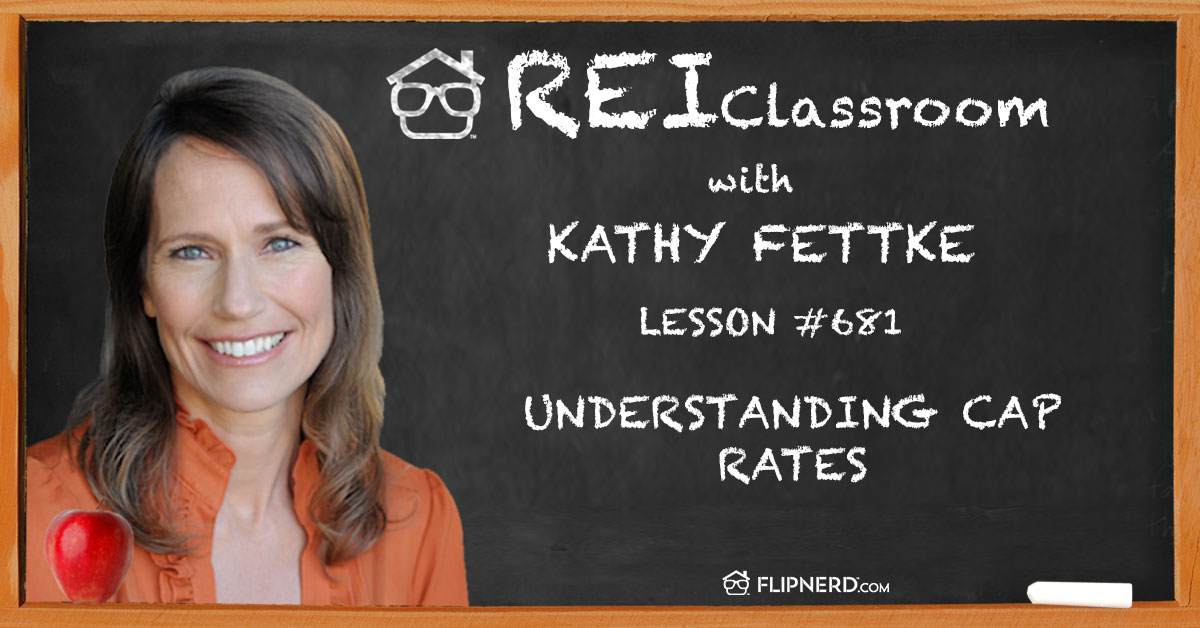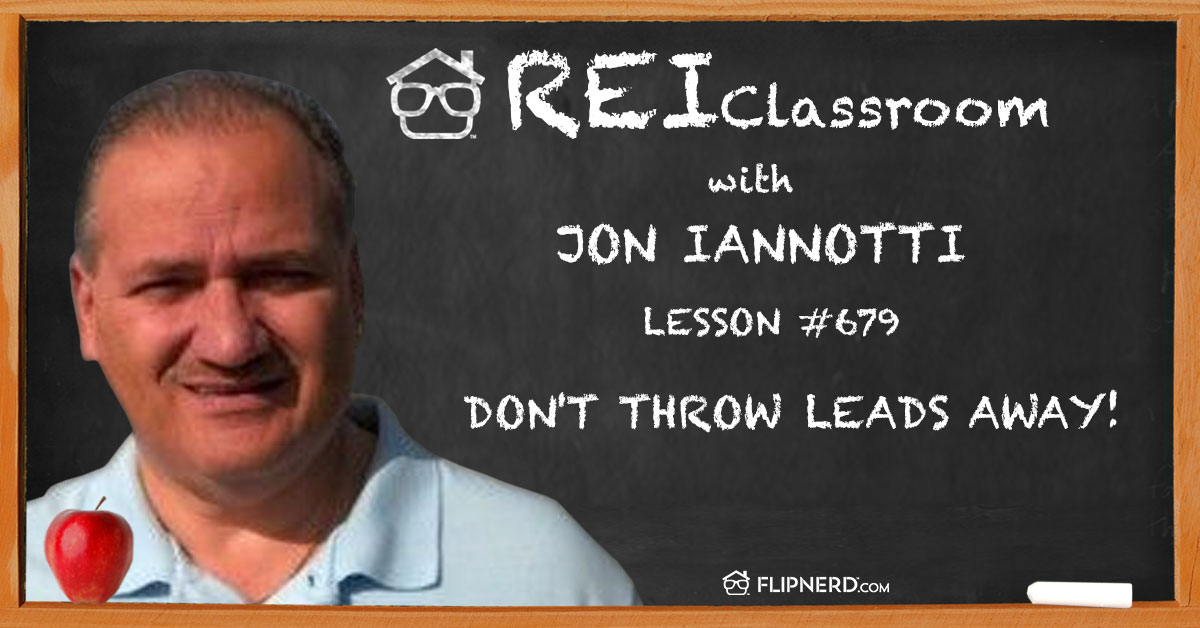Today’s REI Classroom Lesson
Clay Malcolm discusses how you can use your self-directed IRA to purchase real estate and how the IRA itself can actually be a title holder.
REI Classroom Summary
Discover a few of the options you have within a self-directed IRA in real estate so that you can make the best decision for your situation. By giving your IRA ownership, it is able to send and receive money regarding the property.
Listen to this REI Classroom Lesson
Real Estate Investing Classroom Show Transcripts:
Announcer: Welcome back to the FlipNerd.com REI Classroom, where experts from across the real estate investing industry teach you quick lessons to take your business to the next level. And now let’s meet today’s expert host.
Clay: Hi everybody and welcome to the REI Classroom. My name is Clay Malcolm, from New Direction IRA. Today we’re going to be talking about IRA real estate ownership structures.
Announcer: This REI classroom real estate lesson is sponsored by VirtualStaffNow.com.
Clay: Many of you might already be familiar with the fact that an IRA can buy real estate as an asset; it doesn’t always have to buy stocks and bonds and other publicly traded security. When somebody calls the office and says, “I want my IRA to invest in real estate,” that can mean quite a few things. So today we’re going to cover the manner in which the IRA can structure its assets. There are a few ways to do it so let’s start with the most basic one.
An IRA is a legal and financial entity and it’s separate from your personal finance. It can go out and buy things in its tax advantage state that will hopefully make money. Money for you to distribute to yourself in retirement. It can actually be the title holder on a piece of real estate. That can be commercial, residential, raw land or agricultural. You can use any of your real estate investment techniques as well so fix and hold, fix and flip, or just buy it for non-cash producing appreciation. All the strategies can be part of your ownership.
Today what we are going to talk about is the actual ownership piece. That first one is 100% ownership by the IRA of the property. It pays for maintenance, it pays for purchase, it pays for professional services, anything that that asset needs to perform and the IRA then receives all of the returns. In that way, it’s a very one-on-one clean relationship and it’s the way I see most investors use their IRA to buy real estate. Usually, it’s a rental property, whether that’s residential, commercial or agricultural. That varies by a person’s expertise, but 100% ownership is certainly one of the structures.
Now there are lots of IRAs that don’t have the full purchase price of a property they want to get into. A condo, rental house, apartment building or something like that. We are going to talk a little bit about some of those strategies as well. An IRA can be tenants in common with other owners. It’s still on the title work but it’s only a tenant in common with these other investors. The other investors can be a company, could be another person, could be another IRA, a trust, almost any other entity can be a side-by-side tenant in common with the IRA.
That leads to a lot of different strategies. Do you have your personal finances and your IRA as tenants in common side-by-side investors? Do you raise other investors for a larger asset? The point is you don’t have to have the full purchase price in order to participate in an asset that you want your IRA to be invested in.
The next one is loans. An IRA can be a lender. It’s not uncommon for people to say “hey I want my IRA to invest in real estate” and really what they’d like it to do, that IRA money, is to loan to real estate investors or somebody who just needs money. The IRA can loan either secured by collateral or not, that’s the account holder’s prerogative. The account holder finds the borrower, vets them, sets the terms, decides on the interest rate, the length of time. All those kinds of things.
Then the IRA sends the money out to the borrower and the payments, the principle and interest payments, come right back into the IRA. That’s how it makes money. That’s an ownership structure, in a way. A lot of times those loans are secured by collateral that is real estate. That’s why that gets into the mix. The thing that you really want to be thinking about is making sure that you vetted not only the borrower but also the collateral and that your IRA would have a clear path to that collateral if there were some default.
Next thing I’m going to talk about is corporate entities. An IRA can be a private equity or private stock owner. The way that this works in real estate is, most often, someone will create an LLC or an LP, even a C-corp. There will be several investors or only a couple. The IRA buys an equity share of that corporate entity and then the entity goes out and buys and sells real estate or does whatever it’s going to do. It can buy and sell and be a lender and do all of those things from the corporate entity structure.
In that particular case, the title work is usually in the name of the corporate entity, not the IRA. The IRA’s ownership is of a private equity share of that corporate entity. It’s got a little bit of a chain to it, but it’s still IRA money that is invested into whatever that real estate initiative is.
The last thing I’ll talk about real quickly is just the ownership structure, again, where the IRA is owning it all together 100%, but in a lot of cases, again, the IRA wouldn’t have the full purchase price so it can’t take out a loan. Most real estate investors are familiar with debt leverage, the way it works and the way that can perform financially for you. An IRA has some unusual rules with disqualified persons and things like that so, typically speaking, the loan has to be a non-recourse loan.
As the IRA holder you can’t personally guarantee that loan. The terms may be a little bit different than you get on a regular investor loan. The fact of the matter is the IRS will let you make money on money that you didn’t have to contribute. You can significantly increase your buying power of the IRA by either buying a much more expensive asset or maybe dividing up your cash and getting loans to get control over several properties.
All those are strategies that you would decide. You are really in control of what happens there. Keep in mind that there are several ways to participate in real estate. If you have more specific questions about those things, definitely go out and find the answer because you do have a lot of flexibility. Sometimes that’s hard to remember. Thanks for joining us on the REI Classroom. We’ll see you next time.
Announcer: VirtualStaffNow.com is the leading virtual assistant provider for real estate investors. As busy real estate investors, there’s nothing more valuable than our time. Virtual Staff Now not only helps you find the right real estate virtual assistant for your business, they train them on an on-going basis, manage them daily to make sure they are staying productive and effective and in the event they’re not the right fit or need to be replaced, they handle that for you too. Whether you need 1 or 100 virtual assistants for your team, start the process right now at VirtualStaffNow.com.
Please note, the views and opinions expressed by the individuals in this program did not necessarily reflect those of FlipNerd.com or any of its partners, advertisers or affiliates. Please consult professionals before making any investment or tax decisions, as real estate investing can be risky.
Are you a member yet of FlipNerd.com, the hottest real estate investing community online? If not, you can join for free in less than 30 seconds and get access to hundreds of off-market deals, vendors in your market to help you in your business and you can start networking with thousands of other investors just like you. Get your free account now at FlipNerd.com.
Please check out the FlipNerd family of real estate investing shows where we host four great ongoing shows at FlipNerd.com/shows or simply search for “Flip Nerd” in the iTunes store.
Clay: Hi everybody and welcome to the REI Classroom. My name is Clay Malcolm, from New Direction IRA. Today we’re going to be talking about IRA real estate ownership structures.
Announcer: This REI classroom real estate lesson is sponsored by VirtualStaffNow.com.
Clay: Many of you might already be familiar with the fact that an IRA can buy real estate as an asset; it doesn’t always have to buy stocks and bonds and other publicly traded security. When somebody calls the office and says, “I want my IRA to invest in real estate,” that can mean quite a few things. So today we’re going to cover the manner in which the IRA can structure its assets. There are a few ways to do it so let’s start with the most basic one.
An IRA is a legal and financial entity and it’s separate from your personal finance. It can go out and buy things in its tax advantage state that will hopefully make money. Money for you to distribute to yourself in retirement. It can actually be the title holder on a piece of real estate. That can be commercial, residential, raw land or agricultural. You can use any of your real estate investment techniques as well so fix and hold, fix and flip, or just buy it for non-cash producing appreciation. All the strategies can be part of your ownership.
Today what we are going to talk about is the actual ownership piece. That first one is 100% ownership by the IRA of the property. It pays for maintenance, it pays for purchase, it pays for professional services, anything that that asset needs to perform and the IRA then receives all of the returns. In that way, it’s a very one-on-one clean relationship and it’s the way I see most investors use their IRA to buy real estate. Usually, it’s a rental property, whether that’s residential, commercial or agricultural. That varies by a person’s expertise, but 100% ownership is certainly one of the structures.
Now there are lots of IRAs that don’t have the full purchase price of a property they want to get into. A condo, rental house, apartment building or something like that. We are going to talk a little bit about some of those strategies as well. An IRA can be tenants in common with other owners. It’s still on the title work but it’s only a tenant in common with these other investors. The other investors can be a company, could be another person, could be another IRA, a trust, almost any other entity can be a side-by-side tenant in common with the IRA.
That leads to a lot of different strategies. Do you have your personal finances and your IRA as tenants in common side-by-side investors? Do you raise other investors for a larger asset? The point is you don’t have to have the full purchase price in order to participate in an asset that you want your IRA to be invested in.
The next one is loans. An IRA can be a lender. It’s not uncommon for people to say “hey I want my IRA to invest in real estate” and really what they’d like it to do, that IRA money, is to loan to real estate investors or somebody who just needs money. The IRA can loan either secured by collateral or not, that’s the account holder’s prerogative. The account holder finds the borrower, vets them, sets the terms, decides on the interest rate, the length of time. All those kinds of things.
Then the IRA sends the money out to the borrower and the payments, the principle and interest payments, come right back into the IRA. That’s how it makes money. That’s an ownership structure, in a way. A lot of times those loans are secured by collateral that is real estate. That’s why that gets into the mix. The thing that you really want to be thinking about is making sure that you vetted not only the borrower but also the collateral and that your IRA would have a clear path to that collateral if there were some default.
Next thing I’m going to talk about is corporate entities. An IRA can be a private equity or private stock owner. The way that this works in real estate is, most often, someone will create an LLC or an LP, even a C-corp. There will be several investors or only a couple. The IRA buys an equity share of that corporate entity and then the entity goes out and buys and sells real estate or does whatever it’s going to do. It can buy and sell and be a lender and do all of those things from the corporate entity structure.
In that particular case, the title work is usually in the name of the corporate entity, not the IRA. The IRA’s ownership is of a private equity share of that corporate entity. It’s got a little bit of a chain to it, but it’s still IRA money that is invested into whatever that real estate initiative is.
The last thing I’ll talk about real quickly is just the ownership structure, again, where the IRA is owning it all together 100%, but in a lot of cases, again, the IRA wouldn’t have the full purchase price so it can’t take out a loan. Most real estate investors are familiar with debt leverage, the way it works and the way that can perform financially for you. An IRA has some unusual rules with disqualified persons and things like that so, typically speaking, the loan has to be a non-recourse loan.
As the IRA holder you can’t personally guarantee that loan. The terms may be a little bit different than you get on a regular investor loan. The fact of the matter is the IRS will let you make money on money that you didn’t have to contribute. You can significantly increase your buying power of the IRA by either buying a much more expensive asset or maybe dividing up your cash and getting loans to get control over several properties.
All those are strategies that you would decide. You are really in control of what happens there. Keep in mind that there are several ways to participate in real estate. If you have more specific questions about those things, definitely go out and find the answer because you do have a lot of flexibility. Sometimes that’s hard to remember. Thanks for joining us on the REI Classroom. We’ll see you next time.
Announcer: VirtualStaffNow.com is the leading virtual assistant provider for real estate investors. As busy real estate investors, there’s nothing more valuable than our time. Virtual Staff Now not only helps you find the right real estate virtual assistant for your business, they train them on an on-going basis, manage them daily to make sure they are staying productive and effective and in the event they’re not the right fit or need to be replaced, they handle that for you too. Whether you need 1 or 100 virtual assistants for your team, start the process right now at VirtualStaffNow.com.
Please note, the views and opinions expressed by the individuals in this program did not necessarily reflect those of FlipNerd.com or any of its partners, advertisers or affiliates. Please consult professionals before making any investment or tax decisions, as real estate investing can be risky.
Are you a member yet of FlipNerd.com, the hottest real estate investing community online? If not, you can join for free in less than 30 seconds and get access to hundreds of off-market deals, vendors in your market to help you in your business and you can start networking with thousands of other investors just like you. Get your free account now at FlipNerd.com.
Please check out the FlipNerd family of real estate investing shows where we host four great ongoing shows at FlipNerd.com/shows or simply search for “Flip Nerd” in the iTunes store.









